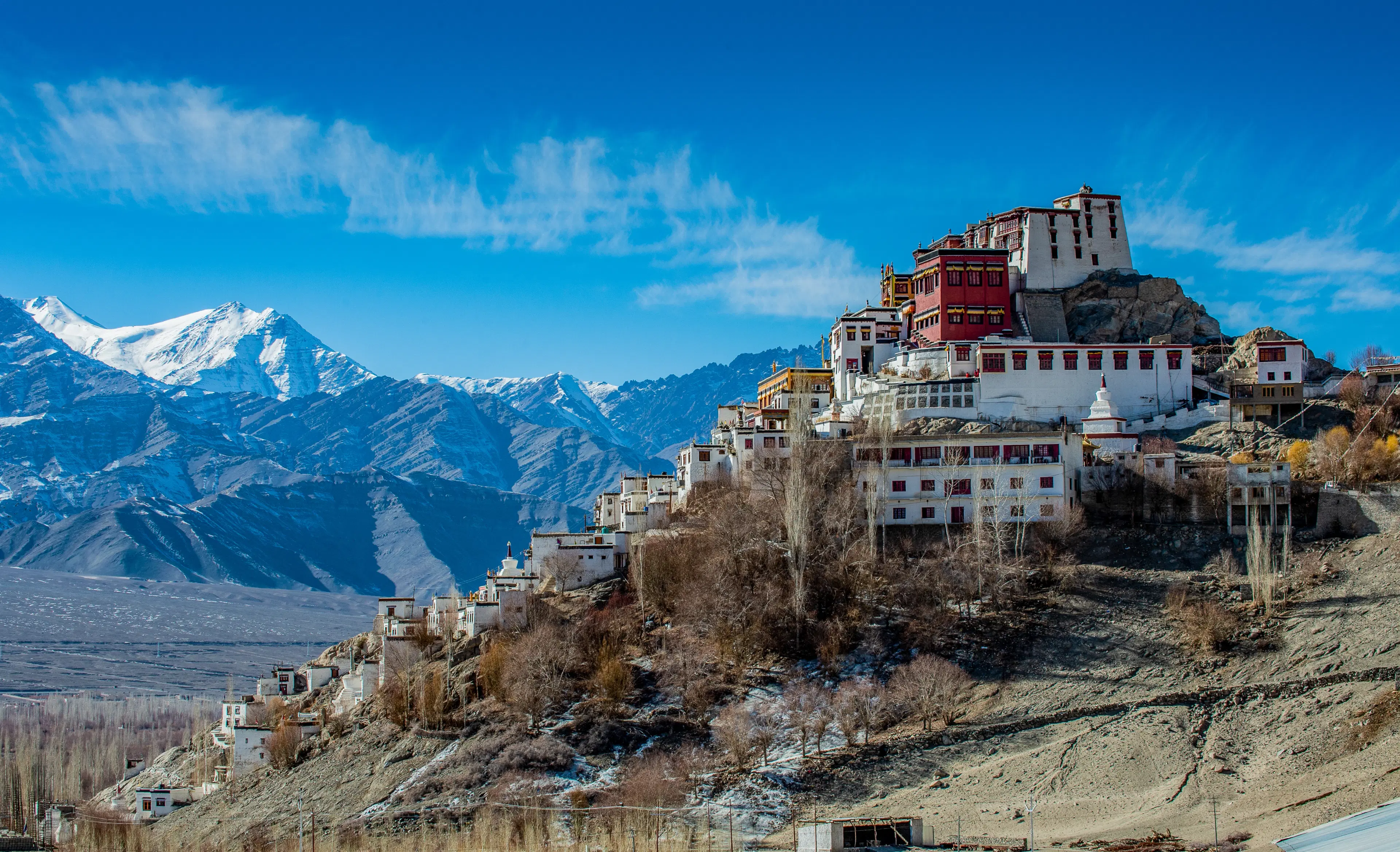
Flights
•04 min read

Ladakh is a land where rugged landscapes meet serene spirituality. The ancient Buddhist trails in Ladakh weave through time, guiding travelers along majestic mountains, pristine valleys, and awe-inspiring monasteries. This post explores the rich Buddhist culture in Ladakh, offering insights into its famed gompas, pilgrimage routes, meditation retreats, and unique artistic heritage. Whether you’re seeking adventure, a spiritual retreat, or a cultural deep dive, these trails promise a serene journey into the heart of Ladakh's sacred legacy.
Ladakh has long been celebrated as a spiritual hub in the Himalayas. Its historical ties to Buddhism are evident in every corner—from ancient monasteries to traditional festivals that preserve the teachings of Tibetan Buddhism. The art, architecture, and rituals echo a deep reverence for a way of life that has endured through centuries, making Ladakh a beacon for spiritual tourism and pilgrims alike. The region’s majestic landscapes serve as a natural canvas for centuries-old practices and celebrations that continue to inspire the modern traveler.
Exploring the Buddhist trails in Ladakh is a unique experience that combines spiritual discovery with an adventurous spirit. These pathways offer more than just scenic views; they lead to a deep understanding of the local Buddhist culture and the monastic heritage that defines this remote region. Travelers can immerse themselves in the rituals of ancient temples, connect with monks during meditation retreats, and witness the living legacy of a tradition that emphasizes inner peace and mindfulness. The journey transforms a simple walk into a soulful pilgrimage where every step resonates with centuries of devotion.
The Buddhist monasteries in Ladakh are among its most compelling attractions. Hemis, Thiksey, Diskit, and Lamayuru dominate the landscape, each with its own unique history and spiritual aura. Hemis Monastery, the largest among them, stands as a testament to Ladakh’s enduring religious traditions. Thiksey is renowned for its towering Buddha statue and panoramic views, while Diskit and Lamayuru charm visitors with their intricate murals and ancient carvings. Hidden gems like Phuktal Gompa offer an offbeat encounter with history, tucked away in secluded valleys that seem to whisper secrets of a bygone era.
The region’s pilgrimage routes are arteries of spiritual heritage, connecting numerous ancient Buddhist sites. Trails like the one from Lamayuru to Alchi and tours through the Sham Valley provide a unique window into Ladakh’s past. As you traverse these historic pathways, you’re not just witnessing nature’s beauty, but also the spiritual evolution that these trails have influenced over time. They serve as conduits linking travelers with centuries-old practices, enabling a poignant reconnection with the cultural and religious fabric of Ladakh.
Hemis Monastery, the largest in Ladakh, hosts the annual Hemis Festival, celebrating the birth of Guru Padmasambhava. It’s a must-visit for those exploring Buddhist culture in Ladakh.

The tranquil monasteries scattered throughout Ladakh offer more than visual splendor—they provide sanctuaries for meditation and spiritual practice. Many of these sites host meditation retreats where visitors can explore the essence of Buddhist teachings. In these serene settings, where the natural world gently whispers its secrets, you can experience an enhanced connection with your inner self. These retreats invite travelers to pause, reflect, and engage deeply with practices that have nurtured the human spirit for centuries.
The artistic legacy of Ladakh is as rich as its spiritual history. Intricate thangkas, vibrant murals, and majestic statues adorn monasteries, each telling stories of divine enlightenment and cultural fervor. Buddhist art in Ladakh is not just decoration; it is a symbolic language that communicates spiritual ideals and historical narratives. The very architecture of these sites reflects Buddhist traditions through elegant designs and careful attention to detail, standing as a tribute to the values of compassion, mindfulness, and harmony with nature.
The ideal time to traverse the Buddhist trails in Ladakh is during the summer months when higher altitudes open up to accessible roads and clear skies. Planning your journey in advance is essential, especially for high-altitude treks. Travelers should gear up for brisk weather changes and follow health guidelines for acclimatization. Additionally, knowing about permits and the specific logistics required for accessing remote monasteries helps ensure a smooth and enriching experience.
While exploring these sacred paths, it is vital to practice responsible tourism. Embrace eco-friendly habits and show deep respect for local traditions. Simple acts like respecting the silence in prayer halls, interacting with monks with genuine politeness, and supporting local artisans help maintain the sanctity of these cultural treasures. This thoughtful approach not only enriches your travel experience but also contributes to preserving Ladakh's vibrant spiritual heritage.
Beyond the well-known sites lies a realm of hidden monasteries that offer a more intimate encounter with Ladakh’s spiritual past. Places like Phuktal Gompa, nestled against dramatic cliff faces, remain relatively untouched by the mainstream, inviting seekers to experience solitude and introspection. These lesser-visited sites make it possible to enjoy the tranquility and unique charm of remote Buddhist retreats, far away from the tourist trails.

Each journey on these ancient routes comes with a treasure trove of cultural encounters. Local festivals, traditional rituals, and everyday interactions with Ladakhi communities provide insights into a living culture that continues to evolve. These personal stories and moments of connection deepen your understanding of Buddhist traditions and the profound respect that the community holds for its heritage.
Yes, some monasteries offer accommodations for visitors, particularly those attending meditation retreats. It is best to inquire in advance and adhere to their guidelines.
Hemis Monastery is the largest and most renowned, celebrated for its annual festival and extensive cultural heritage.
Ladakh is home to numerous gompas, each unique in its history, architecture, and spiritual atmosphere.
Phuktal Gompa is a hidden gem, famed for its remote, cliffside location that offers breathtaking views and unmatched solitude.
Popular trails include routes connecting Hemis, Thiksey, Diskit, and Lamayuru, along with pilgrimage pathways like Lamayuru to Alchi and Sham Valley.
The Buddhist trails in Ladakh offer a captivating blend of spirituality, culture, and adventure. From the majestic monasteries to the intimate meditation retreats and awe-inspiring artistic expressions, every step is a gateway to understanding the region's deep-rooted Buddhist heritage. This journey through ancient sites and hidden corners not only enriches the soul but also ignites a desire to explore further, making Ladakh a truly timeless destination for spiritual tourism.